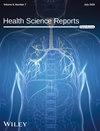Spatiotemporal Analysis of the Distribution of Waterborne Diseases in Children Under 5 Years of Age From 2018 to 2022 in the Lemba Health Zone in Kinshasa, DR Congo: A Retrospective and Observational Analysis
Abstract
Background and Aim
The city of Kinshasa faces the problem of access to drinking water and sanitation; its municipalities and health zones are exposed to a proliferation of waterborne diseases, a problem for the public health of the population. This study aims to carry out a spatial and temporary analysis of the distribution of waterborne diseases.
Methods
We carried out an environmental investigation followed by the collection of data that were processed by tools of the geographic and statistical information system using Pearson correlation to see the link between these diseases in space and time.
Results
The distribution of malaria affects more intermediate zones, including Mbanza-Lemba with 9044 cases and an average of 1809 cases per year in the period studied; the same case is true for typhoid fever and diarrhea which affect the flood zone including Gombele with 12,420 cases with an average of 2484 cases per year of typhoid fever and 4931 cases for diarrhea. The Salongo health area has the most recorded cases of amoeba, including 2192, with an average of 438 per year. Malaria has a strong correlation with diarrhea, which is 0.99, these two diseases have a strong to medium correlation with amoeba. A negative correlation is observed with typhoid fever.
Conclusion
The distribution of waterborne diseases in space and time in the region studied is linked to physical factors such as altitude and slope, creating flood zones likely to increase the spread of these diseases. The problem of access to drinking water and the problem of sanitation are other factors facilitating the spread of these diseases.


 求助内容:
求助内容: 应助结果提醒方式:
应助结果提醒方式:


